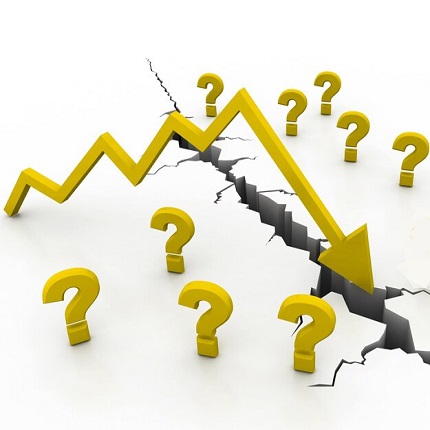 Even as the Bureau of Economic Analysis released its preliminary GDP growth estimate for the second quarter—down at an annualized rate of 0.9%, which is better than the -1.6% in Q1—the takes came in hot as befits a world struggling with climate change.
Even as the Bureau of Economic Analysis released its preliminary GDP growth estimate for the second quarter—down at an annualized rate of 0.9%, which is better than the -1.6% in Q1—the takes came in hot as befits a world struggling with climate change.
“There absolutely is not a recession yet,” came from some quarters, while others noted that, no way to know yet, but maybe one has already started.
It’s the economic equivalent of the “who’s on top?” guessing game in politics. And the trigger is the incorrect notion that two quarters of declining GDP growth is the definition of a recession, which it isn’t. That assumption was put into motion on Sunday, December 1, 1974 in a New York Times op-ed by Julius Shiskin, a commissioner of the Bureau of Labor Statistics, who offered the concept as a “rough translation” of how the National Bureau of Economic Research (NBER), which makes the official call on U.S. recessions, undertakes its qualitative analysis of the economy.
But the call is more difficult. Was the first quarter’s drop really all that it seemed?
“The first quarter was marred by a widening trade deficit due a surge in imports,” said Cornerstone Wealth chief investment officer Cliff Hodge in an emailed note. “This quarter a slowdown in inventory accumulation tipped GDP growth into the red. Neither of these readings provide much of an indication to the strength in the underlying economy.”
And Jeffrey Roach, chief economist for LPL Financial, wrote, “Consumer spending was too strong to raise any recession signals. Given the solid demand for imports last quarter, total trade subtracted 1.4 percentage points off the headline growth estimate. Consumers shifted from buying goods to buying services and after adjusting for inflation, real consumer spending rose 1% annualized from last quarter.”
Then again, J.P. Morgan Asset Management chief global strategist David Kelly wrote, “This morning’s second quarter GDP report was a significant disappointment with real output falling.” Noting that the NBER has a complex view of what recessions are, which includes declines in employment, which haven’t happened, Kelly added, “However, today’s report is further evidence that the U.S. economy is quickly losing momentum and increases the likelihood that even the broadest definition of recession will be met before the end of the year.”
The most effective approach in any industry is to focus not on a label but rather on risk management. The Fed just increased its baseline interest rate again, adding to the pressure on commercial real estate. Financing keeps getting more expensive and so buyers want a discount as a result.
“Interest rates are also rising on consumer credit cards, which is leading to substantially higher costs for anyone with credit card debt,” according to CreditCards.com senior industry analyst Ted Rossman.
Beyond the “how much did consumers spend last quarter” rubric—an important question as almost 70% of GDP depends on the answer—consumer confidence, as measured by the Conference Board, has fallen the last three months. Perhaps they know something about their own circumstances that the experts don’t.
Forget the recession title for a moment, as any given one doesn’t necessarily affect all sectors equally. There are many factors pushing and pulling CRE. That happens both directly, like financing costs, and indirectly, with the question of whether consumers might start softening spending, which would affect businesses and, so, office and retail and industrial property types.
Risk management and mitigation are foundations of any business. Across industries, many larger companies have already focused on aspects of this.
“For the first time in a decade, the 1000 largest public companies in the U.S. improved performance of all three major working capital components last year – they managed inventory more effectively, collected from customers faster, and took longer to pay suppliers,” according to The Hackett Group.
Especially with the impact rising interest rates can have on the viability of CRE projects, now is a good time for investors, owners, operators, and developers to look at cash management, overhead efficiencies, and other aspects of business that might help make whatever comes to be more easily borne.
Source: GlobeSt.

